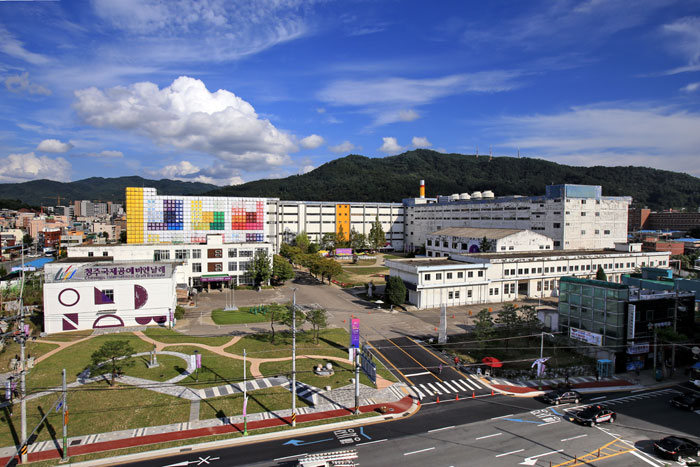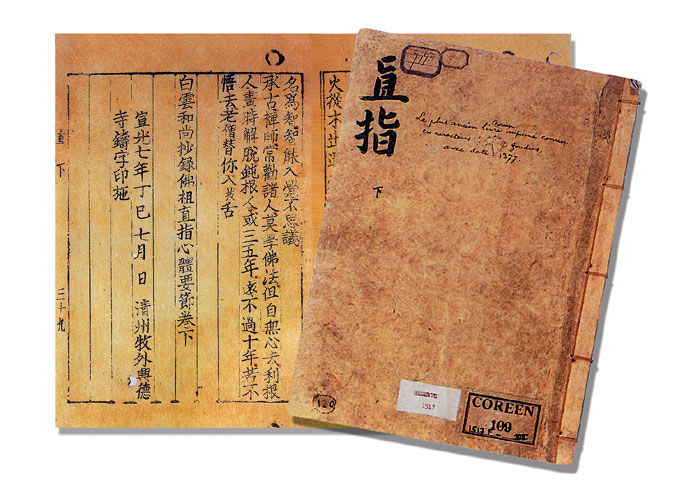Cheongju City, the capital of Chungcheongbuk-do (North Chungcheong Province), has been designated as an East Asian Cultural City 2015 candidate.
Under the East Asian Cultural City project, which launched this year, each of the three nations involved -- Korea, China and Japan -- chooses one city to represent the nation and to carry out cultural exchange projects between the three selected cities. The three countries will announce the city officially selected as the East Asian Cultural City 2015 at this year’s Korea-China-Japan Cultural Ministers Meeting, which will take place at the end of this year. This year’s East Asian Cultural City 2014 members are Gwangju in Korea, Quanzhou in Fujian, in China, and Japan’s Yokohama.
At a participants meeting earlier this year in August, local artists and city representatives praised Cheongju as an appropriate city to host the East Asian Cultural City 2015 programs. They noted the fact that the city developed as a leading city in central Korea. They focused on the city’s cultural assets, as the city is home to a craft biennale and to the world's oldest extant movable metal type printed book, the "Buljo Jikji-simche-yojeol," normally shortened to the "Jikji," meaning the, "Selected Sermons of Buddhist Sages and Zen Masters." They also noted Cheongju’s traditional cultural heritage items, such as the Chojeong Mineral Spring, the Sangdang Sanseong Fortress and the Cheongju Eupseong Fortress.

Cheongju has been hosting the Northeast Cultural City exchange programs, which include linking together its existing fairs and exhibitions, such as the Cheongju International Craft Biennale and the Cheongju Jikji Festival. Then there is the case of the old tobacco processing plant. The cigarette factory, once the largest tobacco processing plant in the country, was going to be demolished. Due to a citizen’s campaign, however, the building has been saved and now contributes to the rebirth of the area by acting as a space for art exhibits and other shows. The case of the tobacco factory has received interest worldwide as a shining example of re-creating the cultural heart of a city.
The culture ministry will continue to support the East Asian Cultural City projects so that they can contribute to exchanges and cooperation between local cities and the world.




By Yoon Sojung
Korea.net Staff Writer
Photos courtesy of the Cheongju Cultural Industry Promotion Foundation
arete@korea.kr
* The "Buljo Jikji-simche-yojeol," or more normally shortened to the "Jikji," is the world's oldest extant book printed with movable metal type. The title of the book means, "Selected Sermons of Buddhist Sages and Zen Masters." The book was made in 1377 at a Buddhist temple in Cheongju during the Goryeo Dynasty (918-1392). UNESCO added the book to its Memory of the World Register in 1997.
** The Chojeong Mineral Spring is a fount of naturally carbonated water with a high proportion of radium. This spring is located approximately 10 kilometers northeast of Cheongju. It was discovered around 600 years ago. Records say that Joseon Dynasty kings, including King Sejong the Great (r. 1418-1450) and King Sejo (r. 1455-1468), stayed at the spring to cure eye or skin diseases.
Under the East Asian Cultural City project, which launched this year, each of the three nations involved -- Korea, China and Japan -- chooses one city to represent the nation and to carry out cultural exchange projects between the three selected cities. The three countries will announce the city officially selected as the East Asian Cultural City 2015 at this year’s Korea-China-Japan Cultural Ministers Meeting, which will take place at the end of this year. This year’s East Asian Cultural City 2014 members are Gwangju in Korea, Quanzhou in Fujian, in China, and Japan’s Yokohama.
At a participants meeting earlier this year in August, local artists and city representatives praised Cheongju as an appropriate city to host the East Asian Cultural City 2015 programs. They noted the fact that the city developed as a leading city in central Korea. They focused on the city’s cultural assets, as the city is home to a craft biennale and to the world's oldest extant movable metal type printed book, the "Buljo Jikji-simche-yojeol," normally shortened to the "Jikji," meaning the, "Selected Sermons of Buddhist Sages and Zen Masters." They also noted Cheongju’s traditional cultural heritage items, such as the Chojeong Mineral Spring, the Sangdang Sanseong Fortress and the Cheongju Eupseong Fortress.

The Ministry of Culture, Sports and Tourism recently chose Cheongju as Korea's East Asian Cultural City 2015 candidate city. The above photo is a bird's eye view of the city.
Cheongju has been hosting the Northeast Cultural City exchange programs, which include linking together its existing fairs and exhibitions, such as the Cheongju International Craft Biennale and the Cheongju Jikji Festival. Then there is the case of the old tobacco processing plant. The cigarette factory, once the largest tobacco processing plant in the country, was going to be demolished. Due to a citizen’s campaign, however, the building has been saved and now contributes to the rebirth of the area by acting as a space for art exhibits and other shows. The case of the tobacco factory has received interest worldwide as a shining example of re-creating the cultural heart of a city.
The culture ministry will continue to support the East Asian Cultural City projects so that they can contribute to exchanges and cooperation between local cities and the world.

The old tobacco processing plant now acts as a theater, gallery and exhibit space.

Visitors to the Cheongju International Craft Biennale appreciate the works of art on display at the exhibition.

Visitors to an exhibition admire the metal type printing blocks.

The "Buljo Jikji-simche-yojeol,” more normally shortened to the, “Jikji,” is the world's oldest extant book printed with movable metal type.
By Yoon Sojung
Korea.net Staff Writer
Photos courtesy of the Cheongju Cultural Industry Promotion Foundation
arete@korea.kr
* The "Buljo Jikji-simche-yojeol," or more normally shortened to the "Jikji," is the world's oldest extant book printed with movable metal type. The title of the book means, "Selected Sermons of Buddhist Sages and Zen Masters." The book was made in 1377 at a Buddhist temple in Cheongju during the Goryeo Dynasty (918-1392). UNESCO added the book to its Memory of the World Register in 1997.
** The Chojeong Mineral Spring is a fount of naturally carbonated water with a high proportion of radium. This spring is located approximately 10 kilometers northeast of Cheongju. It was discovered around 600 years ago. Records say that Joseon Dynasty kings, including King Sejong the Great (r. 1418-1450) and King Sejo (r. 1455-1468), stayed at the spring to cure eye or skin diseases.